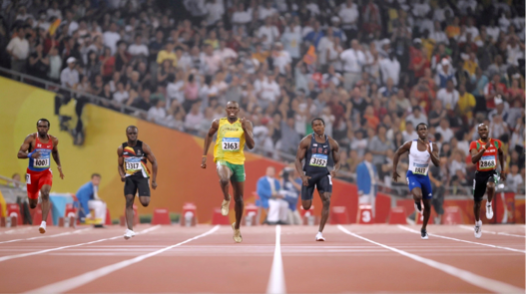“A little knowledge is a dangerous thing. ”
——Alexander Pope

Strategy: the Most "Dangerous Thing” in Management
"A little knowledge is a dangerous thing"expresses the idea that a small amount of knowledge can mislead people into thinking that they are more expert than they really are, which can lead to mistakes being made.
And it is especially so when the ‘people’ referred to here are none other than CEOs and decision makers that are supposed to run the business organizations.
It is not entirely an overstatement when I say ‘strategy is one of the most dangerous things in management’. This is so because:
Ubiquity Most managers (CEOs) agree that strategy is terrifically important, and some even can’t open his mouth without saying the word ‘strategy’.
Misunderstanding Often confused with any sort of ‘plans’ or ‘goals’, CEOs and managers flare phrases like these as their strategy ‘Our strategy is to grow’ or ‘Our strategy is our people’.
Zero-sum competition mindset CEOs and managers often believe strategy is all about how to beat the competitors, which will inevitably lead to head-on collisions, where nobody wins.
Strategy is the buzz word among decision makers, and at the meantime, it often used in a vague and even misleading way. When the decision makers don’t use it right, little strategic success can be expected out of that business organization. In time, strategy has become a word synonymous with say-nothing-corporate-nonsense to the middle management and frontline employees.
Strategy, the definition is ‘deceptively simple’
What does a strategy do? Strategy explains how an organization, faced with competition, will achieve superior performance. The definition is deceptively simple. Why? Because there are fundamental, yet profound questions embodied:
What is competition?
How does it work?
How do organizations ‘win’?
What does superior performance mean?
Take these questions to any CEOs and managers, see if they’d come up with an answer logically. In fact, It might sound hard to believe that so many companies fail to develop good strategies because the people running them (CEOs and decision makers) operate with fundamental misconceptions about what competition is and how it works. This is critical simply because if there were no competition, there would be no need for strategy (try to think about China in 1980s and 1990s when the Reform policy opened up the market, and for the first time in 30 years allowing preliminary market economy practices ), because there are so many fish for everyone in the pond, no need to come up with a way to ‘win’, to differentiate from your rivals.

Instead of digging deeper into the concept of competition, most managers take ‘competition’ as the race to ‘being the best’. This sounds all reasonable from operation point of view—-operating effectiveness (OE) can easily be measured internally. However, from customer point of view it is hardly valid. Ask yourself these questions: is the best car you have ever driven also the best for your other friends or even your parents? is there a best burger for everyone? is a best model of PC for everyone? Under this obvious logic loophole, ‘competing to be the best’ is absolutely the nwrong way to think about competition.
Instead, competition focuses more on meeting customer needs than on demolishing rivals. Unlike in sports, there is one contest with one set of rules. There can be only one winner. Business competition is more complex, more open ended and multidimensional. Within an industry, there can be multiple contests, not just one, based on which customers and needs are to be served.
Within an industry, there can be multiple contests, based on which customers and needs to be served. McDonald’s is a winner in fast food, especially fast burgers, while In-N-Out Burger thrives on slow burgers and its customers are happy to wait for 10 minutes or even longer for fresh burgers.
Rather than enter a particular race with a particular rival, companies can choose to create their own event.
In reality, majority of managers are still operating based on the tacit knowledge of competing-to-be-best. When talk about competition, they naturally gravitate towards being the best. This tacit mentality is the one that eventually causes competitive convergence, which is what happens when companies imitate and match each other’s moves, when they compete to be the best. Over time all companies begin to look like as one difference after another erodes. When rivals converge around standard offering, customers must choose on price alone. This eventually leads to rivalry on price, which is the worst type of rivalry that hurts everybody, including the customers (buyers).
Try One-upmanship, then ‘Involution’ ensues
However, this is just the same competing-to-be-best in another form. Consider this that when you check in at different hotels, especially the international hotel chains (the Westin, Hilton, Marriott, etc), do you find anything different as far as the bed is concerned? or they feel eerily ‘same comfortable’? You’d be surprised to learn that this is the collective result of their efforts in trying-to-be-different! They tried in a non-strategic way, and they failed, again, collectively.
The Hotel Bed Wars started out with Westin Hotels and Resorts in 1999 when they introduced the industry’s first branded bed, its custom-designed Heavenly Bed. They wanted to differentiated ourselves from the competition.

Many executives during their tenure are aspired to ‘differentiate’ the company from the rivals. However, they often don’t really understand what ‘differentiate’ means, at least not on a strategic level. Without a tailored value chain, a company cannot keep a sustainable competitive advantage.
“A good competitive strategy [that] will result in sustainably superior performance.”
——Michael Porter
Soon after “Heavenly Bed”, Hilton launched its Serenity Bed, and it was soon followed by the Revive Collection from Marriott. Hyatt followed in with its Hyatt Grand Bed, Raddison with its Sleep Number One, and Crowne Plaza with its Sleep Advantage Program.
By the end of the Bed Wars in 2005, major rivals had made large investments developing, installing, and promoting its own branded offering. Guests at every hotel in the category can now rest assured that “bed quality” will not differentiate one hotel from another. Now in retrospect, the collective results of Hotel Bed Wars only raised the bar for everyone, and the long-term profitability in the hotel industry has been chronically low.
Whenever executives decide to pursue one-upmanship—-the uniqueness as the end product or service without a tailored value chain, they are likely to trigger a series of chain reactions that eventually result in “involution” in that particular industry.
Contiuned on: Strategically dangerous: What Makes or Breaks CEOs ( II )